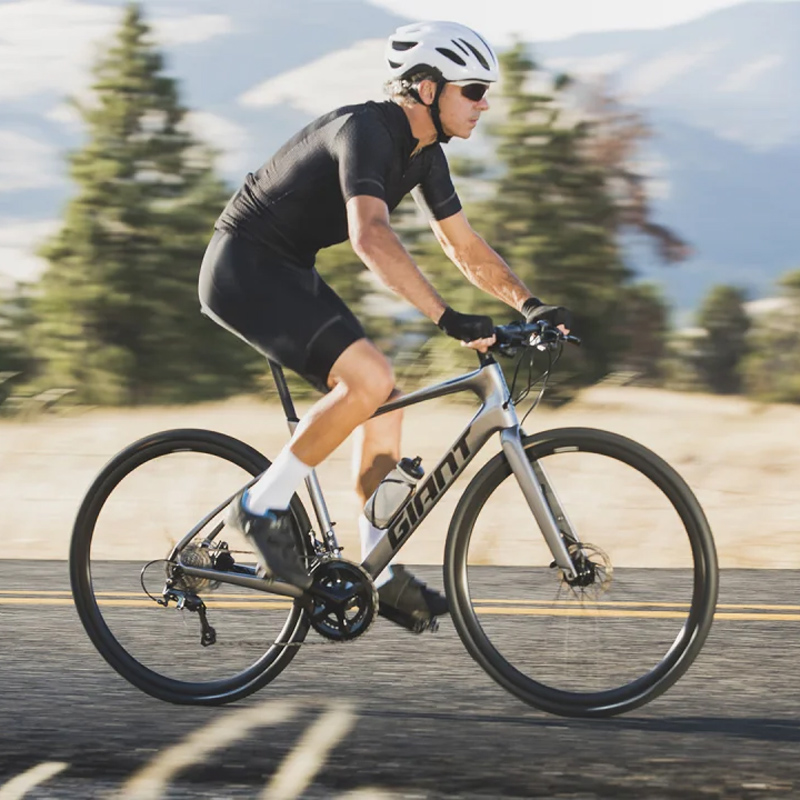A bicycle helmet is not only an essential safety gear for riders, but its selection directly affects both safety and comfort. The right helmet can significantly reduce the risk of injury, especially in the event of an accident, as it plays a crucial role in protecting the head. Whether you're cycling daily, on long-distance trips, or engaging in extreme sports, choosing the right helmet is the first step to ensuring safety.
Basic Helmet Selection Criteria
1. Helmet Size and Shape
Choosing the correct helmet size is the most fundamental step. The helmet must fit your head circumference properly. Typically, you can measure your head using a tape measure to ensure the right size. When wearing the helmet, it should fit snugly but not be too tight, ensuring comfort. When testing, the front edge of the helmet should be about 2-3 cm above your eyebrows, and it should not move left, right, or front to back.
The shape of the helmet is also crucial, as different brands and models may fit different head shapes. Some helmets are designed for round head shapes, while others are tailored for oval-shaped heads. When trying on helmets, ensure that not only does it fit, but it is also comfortable.
2. Safety Standards
When selecting a helmet, it is essential to ensure that it meets the relevant safety certifications. Common helmet safety standards include:
CE EN 1078: Suitable for cycling, skateboarding, and rollerblading helmets, ensuring the helmet undergoes testing for shock absorption and retention systems.
CPSC (Consumer Product Safety Commission Certification): Suitable for the U.S. market, ensuring helmets meet international safety standards.
MIPS Technology: MIPS (Multi-directional Impact Protection System) is an innovative technology that helps reduce rotational forces caused by oblique impacts, further reducing the risk of head injuries.
If you are considering bulk purchasing or custom helmets, make sure to collaborate with helmet manufacturers who comply with these certifications to ensure product quality and safety.
3. Ventilation and Comfort
For long rides, a well-ventilated helmet can effectively reduce the feeling of heat and improve comfort. Most modern helmets are equipped with ventilation holes or airflow channels to promote air circulation and keep your head cool.
The weight of the helmet also affects comfort, especially during prolonged wear. Lighter helmets reduce the strain on your neck, preventing discomfort. When purchasing, choose a helmet that suits your weight preference, especially if you engage in long rides frequently.
4. Adjustability and Fit
A good helmet should have an adjustable system to ensure a proper fit. Most helmets come with adjustable straps and adjustment wheels to help riders fine-tune the tightness according to their head shape. Make sure the straps form a "V" shape just below your ears, and the chin strap should be comfortably tightened to prevent the helmet from moving during riding.
5. Design and Additional Features
The design of the helmet is not only about appearance but also directly impacts safety and comfort. Some helmets are equipped with reflective elements to enhance visibility in low-light conditions. Additionally, for extreme sports like mountain biking or fast riding, choosing a helmet with MIPS technology provides extra protection.
How to Wear a Bicycle Helmet Correctly
When wearing a helmet, pay attention to the following steps:
Measure your head circumference: Use a tape measure to measure your head to ensure the correct size.
Adjust the position: When wearing, ensure the helmet sits about 2-3 cm above your forehead. It should be stable but not too tight.
Adjust the straps: Make sure the straps fit snugly under your chin, forming a "V" shape, and the adjustment system should cater to your needs.
Stability test: When shaking your head left to right or front to back, the helmet should stay firmly in place.
Comfort check: The helmet should fit comfortably on your head without causing discomfort to your head or ears.
Differences Between Children’s and Adult Helmets
There are some differences in the selection of helmets for children and adults. Children's helmets are generally designed for greater comfort and padding to ensure safety and comfort. Unlike adult helmets, children's helmets often feature more eye-catching designs, with bright colors and cartoon patterns to make them more appealing to children.
In terms of safety standards, while both children’s and adult helmets meet the same basic safety requirements, children’s helmets may use thicker inner padding materials to enhance comfort and protection.
Helmets for Other Sports
Bicycle helmets can also be suitable for other sports, such as:
Rollerblading and skateboarding: Provides basic head protection, but for higher-risk activities, it is advisable to choose specialized helmets.
Scooters: Cycling helmets are also suitable for riding scooters, especially in urban environments.
Electric bikes and electric scooters: While electric bikes have higher safety requirements, cycling helmets still offer basic protection.
However, for high-impact sports such as motorcycles, skiing, and mountaineering, specialized helmets are required.

Custom and Wholesale Helmets
For large-scale purchasing needs, such as for cycling teams, schools, or businesses, Custom & Wholesale Helmets are the best choice. Custom helmets not only ensure they meet individual or team needs but also reflect brand identity and style. By collaborating with reliable helmet manufacturers, you can select various styles, colors, patterns, and materials to provide personalized helmets for your team.
Basaltmssolutions is a company specializing in the research, design, production, and processing of carbon fiber and basalt fiber products. As a professional helmet manufacturer, we not only provide high-quality custom and wholesale helmets but also meet your personalized design needs.